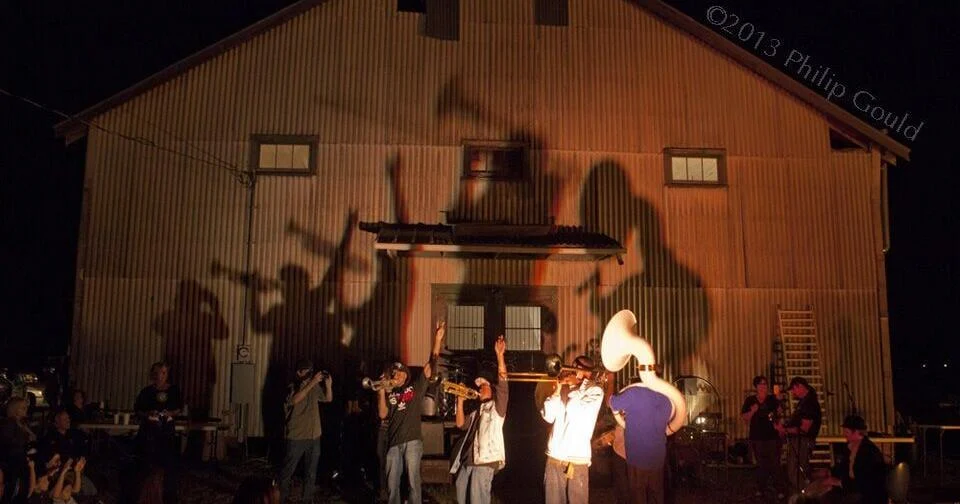Copyright cleveland.com

DETROIT, Michigan - Cleveland’s dreams for a connected, vibrant lakefront could get a powerful dose of inspiration from Detroit. A new $80 million, 22-acre park with giant playground features, nature trails and gathering spots is the latest piece of a decades-long effort to provide steady waterfront access along 5.5. miles of the Detroit River from the iconic Ambassador Bridge to Canada to Belle Isle, with downtown in between. The Ralph C. Wilson Jr. Centennial Park opened last weekend at the same time as two other new stretches of the Detroit Riverwalk — a connector on an adjacent parcel and section nearby featuring a boardwalk that extends 17 feet over the Detroit River to get around a condo and apartment complex. Planners are now closing in on their goal of completing the 5.5 miles of uninterrupted access, with just about a half-mile left to go. Beyond this remaining stretch, about the only detour from the shoreline will be around the Aretha Franklin Amphitheatre, which itself is on the water. Detroit is among a long list of cities embracing their waterfronts like never before - often converting what was once industrial land into new public spaces. It’s happening in places like Cincinnati, Milwaukee, Chicago, Toronto and more. (More about those other projects below.) Cities, foundations and private investment are often in the mix. Cleveland, itself, is now mulling big ideas downtown. “Detroit, along with New York, Seattle, D.C., Chicago, Boston, and others are all cities we have looked at and are using as inspiration for our own lakefront plan,” a Cleveland City Hall spokesperson said. “We know what works in other cities but also have ambitions to build something bigger, better, and bolder that is uniquely Cleveland.” In Detroit, the work has been done under the leadership of the Detroit Riverfront Conservancy - an organization created in 2003 by the Kresge Foundation (the name tied to Kmart), General Motors and the city of Detroit. “For years and years and years, people in Detroit would look across the river to Windsor, Ontario, and see a beautiful riverfront with parks, pathways, public art and all kinds of events. We wanted a park of our own and it had never happened,” said Marc Pasco, spokesperson for the conservancy. GM donated the first half-mile of the Riverwalk a year later in 2004. The conservancy’s first park, Rivard Plaza with an “iconic” carousel, opened in 2007. That same year, the conservancy purchased former Detroit Free Press printing plant property - land that last week became the the Ralph C. Wilson Jr. Centennial Park - so named in part because of $56 million in donations from the foundation of the late Ralph Wilson, Detroit native and former owner of the Buffalo Bills. An estimated 55,000 people turned out for opening weekend, which was timed to also include Detroit Harvestfest 2025. What’s in the park? Designed by the landscape architecture firm Michael Van Valkenburgh Associates — known for creating celebrated urban parks from Brooklyn Bridge Park in New York to Maggie Daley Park in Chicago — Detroit’s new Centennial Park blends ideas gathered from Detroiters themselves. Community members helped shape the park’s features through workshops, site visits to other cities by “22 average Detroiters” charged with bringing back concepts, and student-led design sessions that influenced the imaginative play areas. The 22-acre park unfolds through four main destinations. The 5-acre Delta Dental Play Garden is a whimsical centerpiece filled with larger-than-life animal sculptures from Danish designers Monstrum — among them is a 26-foot otter and a 15-foot beaver — plus a tot lot, slides, and interactive water features. Nearby, the Huron-Clinton Metroparks Water Garden offers winding walkways, quiet seating areas, and a classroom where visitors can learn about the ecosystem. The DTE Foundation Summit serves as a scenic overlook with sweeping views of the Detroit and Windsor skylines — an open green expanse designed for concerts, picnics, sledding, and community gatherings year-round. And the William Davidson Sport House, an airy, skylit pavilion, anchors the park’s recreational offerings with two full-sized basketball courts carrying the name of the sponsor, Detroit Pistons, and flexible space for events in all seasons. Across it all, the park - the fifth park now managed by the Conservancy - includes more than 900 new trees and a wildlife-friendly shoreline reflect the park design’s commitment to nature. Elsewhere The Detroit way is just one example of an array of waterfront ideas coming to fruition. Projects elsewhere regionally offer a wide variety of scope and imagination. Cincinnati – The Banks is a sprawling 195-acre development along the Ohio River between and around Cincinnati’s pro football and baseball stadiums – tying housing, offices, parks and entertainment to the core area of downtown. The Banks Public Partnership, jointly created by the city and Hamilton County, broke ground in 2008. The Smale Riverfront Park opened in 2015. Today there are apartments, offices, places to eat and drink, plus attractions such as a music center, museums and even a carousel. In all, more than $2 billion has been invested to transform what were parking lots, warehouses and rail yards into fresh public and private space. Pittsburgh – Point State Park has long been a signature waterfront spot in Pittsburgh, punctuated by its large fountain near where the Ohio, Allegheny, and Monongahela rivers meet. Built on former industrial land, the park opened in 1974. It’s a popular place to stroll, jog, picnic, or gather for large festivals. But it’s far from the city’s only waterfront development. More is on the way. For example, across the water along the Ohio River, groundbreaking is expected in November on the privately developed $750 million Esplanade project. Piatt Companies envisions 300 apartments, 105 condos, a hotel, 8 acres of public space and a 160-foot tall Ferris Wheel. After 12-14 months of site work, full construction is anticipated to begin in 2027. Milwaukee – The city launched an ambitious plan in 1993 to create 6 miles of a public access Riverwalk on both sides of a 3-mile stretch of the Milwaukee River - designed for use 24 hours a day, 365 days a year. The plan has since been updated to include 12 miles of walkways along the Milwaukee, Menomonee and Kinnickinnic rivers. Winding behind buildings or serving as the front-door to dining establishments, more than 6 miles have been completed. Work is now underway on a three-quarter-mile stretch in Milwaukee’s Harbor District, thanks in part to a $14.7 million state grant. This will include both the extension of the riverwalk, plus landscaping, a live performance stage, parks, public art and more. Chicago – Among the miles of waterfront public spaces in Chicago, Northerly Island Park with its 120 acres could strike a chord with foes of Cleveland’s Burke Lakefront Airport. This park opened in 2015 on land that was once Meigs Field airport. Fed up with delays in closing the airport, Mayor Richard M. Daley famously ordered sections of the runway bulldozed in the dark of the night in March 2003. A short distance from Soldier Field and the Shedd Aquarium, the park now has a small Lake Michigan beach, paved path, large pond at an outdoor amphitheater for up to 30,000 people. Toronto – On a large scale, Waterfront Toronto was created in 2001 as a collaborative of three governments – Toronto, Ontario and Canada - to work with both public and private developers on projects stretching over 2,000 acres. This is far more than just public space, it’s a riverfront neighborhood with parks, public art, condos and more. Waterfront Toronto boasts of creating more than 100 acres of parks, 16 miles of new waterfront access and $13 billion ($9.5 billion U.S.) in private-sector waterfront investment. And more is on the way. How about Cleveland? It’s not that Cleveland lacks waterfront access. The Cleveland Metroparks’ Edgewater, Gordon and Euclid Beach parks are among the public spaces flanking the core. Downtown, Voinovich Park — next to the Rock and Roll Hall of Fame and the Great Lakes Science Center — provides more public space. Prep work is underway for the 20-plus acre Irishtown Bend park on the west bank of the Cuyahoga River. And among the lakefront work under construction are a multi-purpose path linking East 55th Street to East Ninth Street, and the Metroparks’ Sailing Center at the East 55th Street Marina. Now, city and regional leaders are eyeing 50 acres at the current football stadium site that will be vacated as the next major redevelopment opportunity, and — longer term — the transformation of Burke Lakefront Airport into some combination of public space and mixed-use development. To help guide the lakefront effort, the city in 2023 created the North Coast Waterfront Development Corp., a not-for-profit designed to provide consistent leadership beyond the changing tides of City Hall. A developer or development team to shape the stadium-area plan is expected be named by year’s end. Across Lake Erie and upriver to Detroit, Pasco offered Cleveland some words of encouragement on its waterfront vision. “When you start looking at the evolution of the Detroit riverfront, it truly was a collaboration of public and private partners from the beginning,” he said. “If we wouldn’t have shared this vision, we wouldn’t have had the success we’ve had. When people work together, the possibilities are endless. I think the Detroit riverfront is proof of that.”



